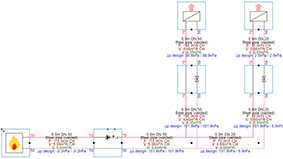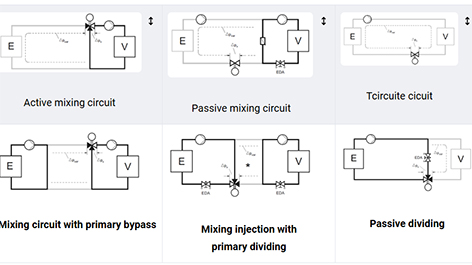Why the Right HVAC System Matters from Day One
For architects, engineers, and contractors working on new builds, selecting the most appropriate HVAC system is one of the most critical decisions of the entire project. It doesn’t just affect indoor comfort—it determines long-term energy performance, carbon footprint, and maintenance costs.
Yet many projects still fall back on legacy system designs, with limited consideration of the building’s actual usage, climate conditions, or modern technologies. That’s a missed opportunity. Because with today’s tools, you can design an HVAC heating and cooling system that is perfectly matched to your building’s needs—before a single component is ordered.
Key Factors That Should Drive HVAC System Selection
Every new construction project is unique. So, your HVAC system must be tailored to:
- Building use: A school has vastly different heating and cooling needs than a hospital or an office. Occupancy patterns, zoning, and internal loads must be considered from the start.
- Size and layout: Larger or more complex buildings may require decentralised or hybrid systems with staged heat sources.
- Climate: Ambient temperature swings influence the sizing of equipment and the selection of technologies such as heat pumps or seasonal storage.
Ignoring these variables leads to poor outcomes: oversized boilers, underused chillers, and uncomfortable occupants.
Discover how to design HVAC systems that meet real-world demands ›
Why Simulation Belongs in the Design Phase
Too often, HVAC design decisions are made using static rules of thumb or outdated Excel templates. But buildings are dynamic environments—and your HVAC system needs to respond accordingly.
That’s why forward-thinking teams use physics-based HVAC design software during the planning stage. Tools like Hysopt allow you to:
- Simulate how the full system behaves across the year—not just on peak load days
- Forecast energy use, emissions, and cost based on real building inputs
- Test multiple design options to find the best combination of comfort, performance, and return
This eliminates guesswork, reduces rework, and creates a shared reference point for every stakeholder—from architects to installers to energy consultants.
Examples of High-Efficiency HVAC Systems in New Builds
Modern HVAC systems are no longer just about heating and cooling—they’re strategic assets in meeting decarbonisation and compliance goals. Some of the most promising solutions include:
- Hybrid systems that combine gas boilers with electric heat pumps, offering both flexibility and reduced emissions
- Low-temperature systems that operate efficiently at 45–55°C, supporting condensing and renewable heat sources
- Variable flow and zoning strategies that minimise energy use without compromising comfort
In recent projects, design-phase simulation has led to 30–50% lower operating costs and faster commissioning. More importantly, the systems delivered on their promises—with measurable results from day one.
FAQ: HVAC Systems in New Construction




